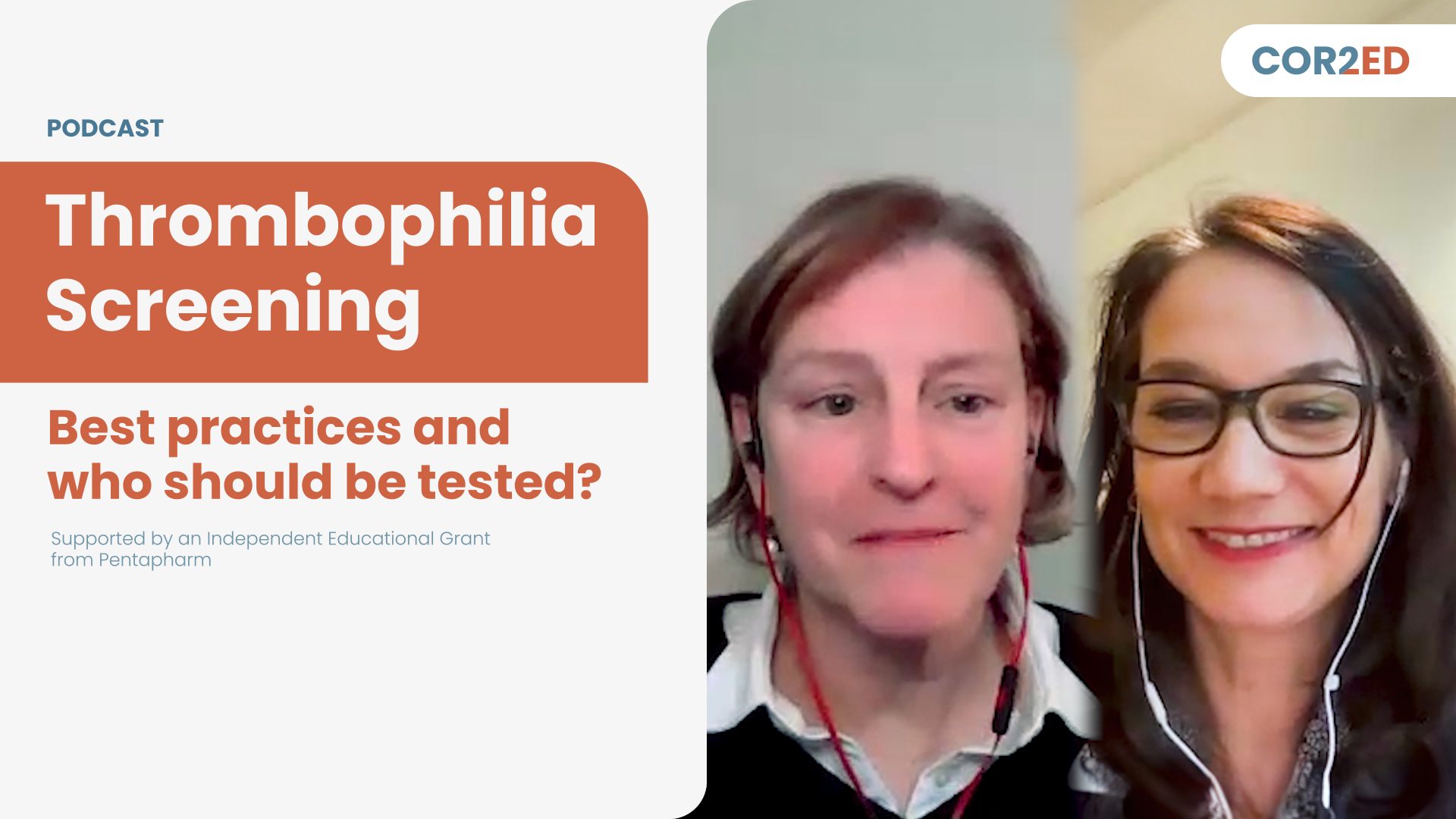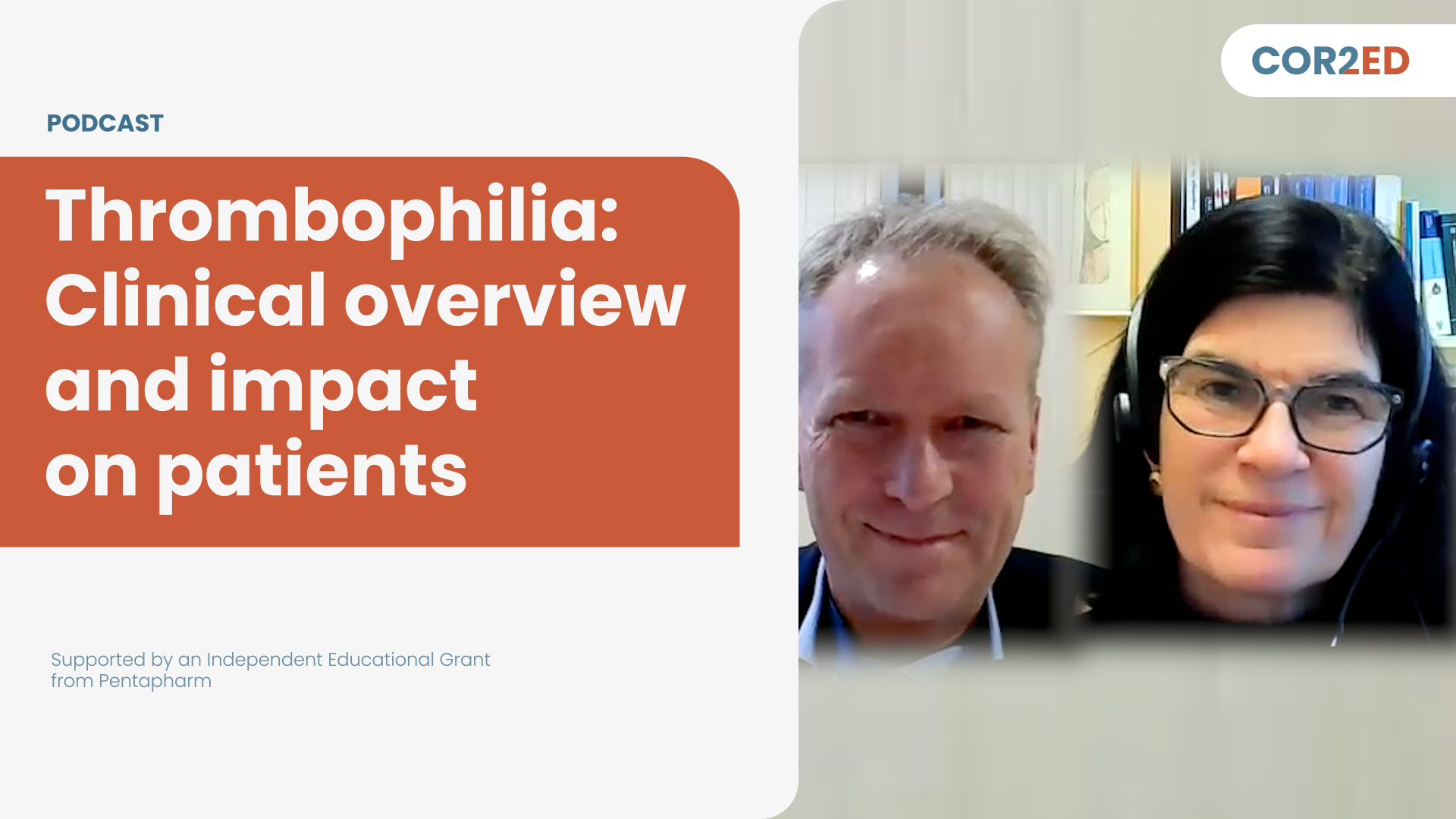Latest strategies for prevention and management of PPH
Brought to you by
Dr. Homa K. Ahmadzia
Maternal-Fetal Medicine Specialist and Associate Professor University of Virginia
Department of Obstetrics and Gynecology at Inova Health System, USA
Prof. Loïc Sentilhes
Professor of Obstetrics and Gynecology, Chairman of the Gynecology and Obstetric Department at Bordeaux University Hospital, France, PI of the TRAAP and TRAAP2 trials
Prof. Christian von Heymann
Chief Physician of the Clinic for Anesthesia, Intensive Care Medicine and Pain Therapy and Medical Director at the Vivantes Clinic in Friedrichshain, Germany
Please note:
OBSTETRICS & GYNECOLOGY CONNECT podcasts are designed to be heard. If you are able, we encourage you to listen to the audio, which includes emotion and emphasis that cannot be grasped from the words on the page. Transcripts are edited for readability. Please check the corresponding audio before quoting in print.
Tonke de Jong
Appropriate management of postpartum hemorrhage requires prompt diagnosis and treatment. However, there's some debate on various PPH prevention and management strategies and the corresponding scientific evidence. What do you believe is the right treatment strategy to prevent and manage PPH? Listen to find out more. In this third episode of a four-part podcast series on severe PPH, we discuss various topics on the management of severe PPH, and we also explore the scientific evidence combined with the clinical experience of the experts. This podcast is an initiative of COR2ED and supported by an independent educational grant from Novo Nordisk. We're very excited to listen to your discussion.
Dr Homa K. Ahmadzia
I'm delighted to introduce you to today's speakers, Professor Loïc Sentilhes, who specialises in the prevention and treatment of postpartum hemorrhage at the University Hospital, Bordeaux, France, Professor Christian von Heymann, who has a special interest in obstetric anaesthesia and the management of patients with postpartum hemorrhage at the Vivantes Clinic in Friedrichshain, Germany, and myself, Dr. Homa Ahmadzia, I'm a Maternal Fetal Medicine Specialist at the Department of Obstetrics and Gynaecology at INOVA Health Systems, United States. Postpartum hemorrhage, as we all know, is the leading cause of maternal mortality worldwide. It's an incredibly important topic, and early recognition and diagnosis is paramount. At many facilities, we might have algorithms to predict postpartum hemorrhage and who is at risk, but often times these don't work, and we miss patients who might have severe postpartum hemorrhage. In this podcast, we're going to talk about several topics that are important for the prevention and management of postpartum hemorrhage. We hope to attempt to review the latest evidence and gaps in scientific literature for the clinicians, the patients, and the health systems. So I will facilitate discussion as moderator, and now I'd like to welcome the experts. Professor Sentilhes, if you could help introduce yourself, please.
Prof. Loïc Sentilhes
Hello, everybody. I'm Loïc Sentilhes. In this podcast, we will discuss new strategies for prevention of post-partum hemorrhage that have emerged since last decades but the level of evidence for these new strategies remain mostly low, and we hope that this debate will help the listeners to determine the place of these strategies in the algorithm of the PPH management.
Dr Homa K. Ahmadzia
Professor von Heymann
Prof. Christian von Heymann
I'm happy to be here. Thank you, Homa, for the nice introduction. I am by training an anaesthesiologist, intensive care physician, and I have a special interest and did some certification in thrombosis and hemostasis issues as well. And to me, as you can see from the composition of the panel, PPH is a challenge to a multidisciplinary team consisting of the obstetrician, that is clear, of the anesthesiologists who comes to the situation in most instances. And therefore I'm very much looking forward to having a lively discussion with you on the most debated issues in the treatment and management of severe postpartum hemorrhage.
Dr Homa K. Ahmadzia
Well, thank you both for joining us today. So, let's jump into our first topic. Should tranexamic acid be used prophylactically to prevent postpartum hemorrhage? As you may know already, tranexamic acid is an antifibrinolytic, which helps to stabilise fibrinolysis, reduce bleeding or blood loss. It's been consistently shown in non-obstetric trials to improve outcomes and reduce bleeding by about 30%, and with the most recent POISE-3 trial in non-cardiac surgery. In the past three to five years, it's been studied in many randomised trials, such as the TRAAP-2 and MFMU multicenter study, with some equivocal findings on efficacy for the prevention of post-postpartum hemorrhage and delivery. Professor Sentilhes, can you discuss some of these studies a little bit more in detail?
Prof. Loïc Sentilhes
Thank you very much, Homa. As everybody knows, in the WOMAN trial, TXA was shown to reduce bleeding related mortality among women with PPH, especially when the drug was given shortly after delivery. And this result suggests that it may prevent coagulopathy after delivery rather than treat it. And in the TRAAP trial among women with vaginal delivery, TXA decreased significantly the rates of blood loss above 500 millimetres, PPH according to clinicians, and the use of uterotonics due to bleeding. In TRAAP-2 and MFMU trials conducting among women undergoing cesarean, the mean peripartum change in hemoglobin, that was a secondary outcome, was lower in the tranexamic acid group, although the clinical relevance of this result is questionable. And finally, cost-effective analyses suggest that TXA for the prevention of blood loss might be cost-effective, although the effect size in cost and effectiveness is low.
Dr Homa K. Ahmadzia
Thank you for those comments. Professor von Heymann, can you tell us and share a little bit more about your perspective about the prophylactic use of TXA?
Prof. Christian von Heymann
Thank you, Homa. I'm full of respect for the work, that Professor Sentilhes did with conducting the TRAAP and the TRAAP-2 trial. And we carefully analysed these trials when we updated the German guideline on diagnostics and treatment of PPH. And we finally came to the conclusion that most likely the prevention of blood loss after vaginal delivery and cesarean section is not the best indication for tranexamic acid. And accordingly, our experience is that most of the patients are happy, and the blood loss is confined to a reasonable volume with the use of oxytocin and carbetocin, that means uterotonic agents alone. And for these patients, we feel that the prophylactic use of tranexamic acid is not justified. And therefore we recommend, and that was written down by the guideline group, that we recommend the use of tranexamic acid in those patients who have an increased blood loss, or patients who have a greater blood loss of 500 mls as measured by a calibrated drape, or in whom the obstetrician has the feeling that this patient is having a diffuse coagulopathy or diffuse bleeding tendency, that these patients, and I'm convinced that these patients are the best population for the administration of tranexamic acid. That means early that is in most instances in parallel with uterotonic treatment, either oxytocin or the next step, sulprostone the prostaglandin derivative.
Dr Homa K. Ahmadzia
Thank you for sharing that. I'm curious to hear if both of you have opinions here where these large randomised trials that were conducted gave TXA at umbilical cord clamp, and that's mostly to avoid these theoretical risks for the neonate as potentially crosses the placenta. Do you think that we still need additional trials that are given TXA pre-cord clamp to address this question? Because bleeding clearly starts before the start of surgery, or right at the start of surgery rather, and not at a vocal cord clamp.
Prof. Loïc Sentilhes
Yes, it's an interesting question because some people considering that small effect that was observed in the TRAAP trials and in the MFMU tria, that was because the TXA was given too late after the beginning of the delivery. And some other trials, small single with methodological limitations have shown higher effects when TXA was given before the incisions for the cesarean and before the cord clamping. But yes, I think it would be interesting to have additional evidence about the effects between the delay of the administration of the drugs and the plan delivery. But in France, I think it would be difficult to make such a trial because we will have not the authorisations to give TXA before the cord clamping because we have no data that considered that the safety data that no higher risk of, in particular, ischemic vascular events in the neonates, and we know that blood coagulation of the neonate is very different than the coagulations of the adult. In France, it was impossible to perform such trials, but I would be interested in other trials could be performed in other settings.
Dr Homa K. Ahmadzia
That is an interesting perspective. I think the take on what I've heard so far is that TXA does clearly reduce blood loss in the hemorrhage, morbidity, and non-obstetric, large randomised trials. In obstetrics, this data has been somewhat inconsistent. It may be due to the fact that participants who are at higher risk haven't always been studied in large numbers, or perhaps given the timing of the administration prior to delivery hasn't been done. I think we should stay tuned for some of these trials. I know the TRAAP previa trial, it sounds like hopefully will be coming out in higher risk populations. The IM-WOMAN trial I've heard as well will be giving TXA precord clamp in 30,000 patients. I think we'll have some more data to answer these questions. Maybe let's shift gears now to talk about the next topic, initiating blood transfusion or blood products. Should those be as soon as possible or based on certain criteria? In obstetrics, as we know, the timing of transfusion is not always clear. Sometimes hemorrhage can be controlled where the bleeding is gradual and accumulates to higher volumes over the course of the surgery, or sometimes rapid and uncontrolled and unexpected. The term uterus has about 500 millilitres of blood per minute that circulate. And so when you have an extension into the uterine arteries or large venous sinuses, it can be very brisk and accumulate very fast, even within a minute or two. The decision about transfusion can be by the obstetrician at times based on the amount of blood loss in the field, or the anesthesiologist, especially if the patient is hemodynamically unstable. Sometimes lab values are used to guide this, but I wanted to hear a little perspective first before we jump into that about the evidence about timing of administration. Professor von Heymann, when do you think is the optimal time to consider transfusion for obstetric patients?
Prof. Christian von Heymann
Well, if you mean by transfusion, red blood cell transfusion, we learned from a lot of prospective randomised trials in other fields of medicine, especially in the fields of cardiac surgery, intensive care medicine, and other specialties that most patient populations do not do worse when they are transfused restrictively. Having this said, you will ask what is restrictive? And that what was usually adopted as a threshold was a hemoglobin value between six and seven for these patient populations. And coming back to the population of young, healthy mothers, then in these patients, and I assume that most of them are healthy from a cardiovascular and pulmonary point of view we would adopt a transfusion threshold of below seven to be safe in these mothers and also in their children. And we recommend, and this is a German and a European guideline, to transfuse the patients when the hemoglobin drops below seven and is still hemodynamically unstable, then he will definitely, or she will definitely need a blood transfusion. But if, (and that is our experience), and if the patient stabilises very quickly, then we can even tolerate a profound anemia below a hemoglobin of six in these patients. Those patients will then probably require some iron replenishment because then due to the blood loss, they come into an iron deficiency anemia and need some iron to stimulate the bone marrow to produce red blood cells.
Dr Homa K. Ahmadzia
Thank you for sharing that. Professor Sentilhes, can you comment on your experience in timing of transfusion and thresholds?
Prof. Loïc Sentilhes
Yes, it's a big issue on the management of PPH because we have no real high-level data on obstetric context, and I think that PPH is quite different than in other context for bleeding. I share the concerns regarding the morbidity associated to the transfusion of blood loss, and to try to avoid blood loss it's an important key issue of the maternal outcome as it was underlined by Christian. I agree that the timing of transfusion during PPH is not evidence-based. However, we have some limitations of the bedside of standard laboratory-based hemoglobin is that the level of hemoglobin remains often normal at the initial stage of the PPH, even when massive blood loss occurs, so when we have a policy of transfusion based on hemoglobin level, sometimes it's too late because when we control two hours after the blood loss, we can see important drop of the hemoglobin that was not expected. I have to say that we have to be concerned about that at the initial stage, even with massive blood loss, the level of hemoglobin can be normal. So, that's why I believe that blood transfusion has to be decided mainly on clinical signs, in particular with the assessment of the quantitative blood loss, even if there is some issue about the quantitative blood loss − but when we use collective drape usually we have a good assessment of blood loss − and with hemodynamic effects too and the flow of the blood loss is important for me. In my opinion, it might be too late to consider blood transfusion for an ongoing PPH, not when the PPH is over, an ongoing PPH, when the hemoglobin has dropped below six grams. And the French guidelines, I recognise that it's with low level of evidence, but the French guidelines suggest that the administration of units of packed red blood cells should be based mainly on clinical signs of PPH severity without necessarily waiting blood test results, and that the objective of transfusion is to maintain an hemoglobin concentration above eight grams.
Prof. Christian von Heymann
Concerning the point Loïc made with using the hemoglobin thresholds for transfusion, and I completely agree that clinical symptoms are as important as the hemoglobin value to guide the transfusion of packed red blood cells, especially in the light of that not all hospitals have an easy access to hemoglobin measurements. So sometimes you only have to depend on clinical symptoms to guide your transfusion decision. But I would also like to say that every patient who has a bleeding problem needs some careful observation and treatment in a specialised unit. And we usually admit those patients to the intermediate care unit where we have a close monitoring not only on the cardiovascular system, but also on the blood gases, and so that we can quickly decide whether the patient needs some more treatment or not. I think this is an important point.
Dr Homa K. Ahmadzia
I can see there's some differences of opinion in the timing of the transfusion. I think some of that comes from the limited data that we have in terms of thresholds and specifically the obstetric patient population. A lot of the guidelines we extrapolate from the cardiac and other fields, and we really could use some more guidelines based on trials in this field. I think that's a deficiency or a gap that we're highlighting here. So, I think in terms of pharmacologic treatments used before or after, besides the blood products we talked about, when is the optimal timing? Should they be used before or after failure of conventional methods? Here what I'm referring to specifically, besides the uterotonics, which are standard of care, would be things like fibrinogen concentrate or tranexamic acid, which we talked about earlier in terms of prevention, but really we're talking more about treatment here. What is your perspective on this, Professor Sentilhes?
Prof. Loïc Sentilhes
As stated before in the WOMAN trials, as you know, the survival benefits associated with the earlier administration of the TXA acid in these women with active PPH, suggests tranexamic acid should be given as soon as possible to achieve clinical benefits as stated by the World Health Organisation. Recently, the E-MOTIVE trials provides additional indirect evidence in favour of an early use of TXA when PPH occurs. For the fibrinogen administration, as you know, observational studies of women with PPH indicate that a low fibrinogen concentration since early phase of PPH is associated with excessive subsequent bleedings and blood transfusions, suggesting that early use of fibrinogen might improve maternal outcome related to blood loss. Unfortunately, randomised controlled trials did not confirm this hypothesis.
Dr Homa K. Ahmadzia
Professor von Heymann, can you talk a little bit about specifically the fibrinogen concentrates and what your perspective on use on those would be?
Prof. Christian von Heymann
Yes, thank you. And I agree with Loïc. Unfortunately, the studies that we have, and we have at least three prospective randomised trials looking at fibrinogen in PPH patients, they did not show significant benefits for the patients treated with fibrinogen. But if you closer look into the data, then you see that in all three studies, the patients who received were randomised to the fibrinogen arm, they did not have a deficiency of fibrinogen. And they still had normal levels because fibrinogen cytosis is upregulated during pregnancy, and so it takes some time and it takes some blood loss to make those patients fibrinogen deficient. And unfortunately, these three trials captured patients who had an almost normal fibrinogen, and that is unfortunately somehow a failure of the study design and not a failure of the drug because that is indicated in patients who are deficient of fibrinogen. And I'm sure that in those patients who are deficient of fibrinogen, fibrinogen concentrate is the most effective and quickest way to replenish fibrinogen. And I'm sure although it has not been shown in prospective randomised trials that fibrinogen concentrate is superior to other treatment options like plasma or cryoprecipitate. But unfortunately, we do not have these data right now. But what I would like to state, and this goes now back to the tranexamic acid discussion that we had before, if I assume that there is not only loss of fibrinogen, but also some fibrinolytic degradation due to an increased fibrinolytic activity in the blood of the patients, then it is strongly advised to give the tranexamic acid before you give the fibrinogen concentrate. Otherwise, the replenished fibrinogen will be broken down, and then it may be not very useful for the patient.
Dr Homa K. Ahmadzia
These are, I think, really interesting points, and that we've all brought up here in this conversation topic. One, I think, interesting offshoot or segue from this is you mentioned the fibrinogen concentrate is much rapidly to administer, and for those listening who might not know that FFP or cryoparticipate takes time to thaw, and sometimes that can lead to delays. But the fibrinogen concentrate is often in the shelf, you mix with solution and can pretty rapidly administer. Time is important, as I mentioned earlier, with minutes can make a difference and added blood loss. I think speaking to a little bit about this is a good area, I think, to incorporate the lab testing. I'm curious what your all, in terms of perspective or utilisation of point-of-care devices or lab tests to guide transfusion has been, and where do you think the gaps in this area are?
Prof. Loïc Sentilhes
Yeah, I think so we need to have additional evidence about the use of bedside test, and viscoelastic test, and hemoglobin test bedside to guide the transfusion. Maybe it could be very helpful to try to give the good medication to the good patients, but unfortunately we don't have a lot of evidence about that. Because as you know, the people who do not believe in the bedside test to guide the transfusion don't want to perform randomised controlled trials, and the people who guide their transfusions because they believe that the lab test helps, they do not want to perform also randomised controlled trials. It's quite difficult to have evidence. As it has been underlined by Christian about the fibrinogen trials, that one big issue when we try to have evidence about PPH, and ongoing PPH and severe PPH that when we perform eligible woman and we include woman, sometimes it's not severe PPH. We don't have include the good woman because we don't have time when there is a very severe PPH to include the woman and to give the administrations and to perform the randomisations. So, it's one issue because when we have negative trials, maybe it's not the drugs or the strategy that is negative, as stated, Christian, it's only the design.
Dr Homa K. Ahmadzia
Professor von Heymann, do you have any additional thoughts here?
Prof. Christian von Heymann
Well, I think there is a large ongoing controversy on how to use blood tests and point-of-care coagulation testing in patients who are bleeding, because we always have the feeling that time is running away and we cannot wait for the blood results and we have to treat. Otherwise, the patient deteriorates and bleeds to death. One of the advantages of point-of-care blood testing is that you really can have it at the bedside very close to the patients and that you have a time advantage in that you have results, interpretable results, within 5-10 minutes after the test has been started. And usually the central lab takes much longer. And this is the advantage that we have with the point-of-care tests. And I honestly doubt that the specific tests from the point-of-care coagulation testing are better than that what we have from the central lab. But the time advantage is, especially in bleeding situations, there is a large advantage for the point-of-care testing. But as Loïc mentioned, we do not have very good evidence from prospective randomised trials which thresholds we should adopt for guiding our substitution therapy with, let's say, fibrinogen or PCC or even factor XIII or even recombinant factor VIIa. That means that in the end, the attending anesthesiologist and obstetrician have to make up their minds on when to give what.
Dr Homa K. Ahmadzia
Yeah, thank you for that, both of your comments and interesting points. I think the takeaway from this question is that it seems that tranexamic acid early use is critical for postpartum hemorrhage, and that saves lives, and that delays additional morbidity after the delivery. Fibrinogen concentrates or other pharmacologic interventions, as we alluded to as well, are maybe not always available or don't have the lab testing thresholds clearly identified in evidence-based algorithms that both obstetricians and anesthesiologists and other providers can agree upon. I think that's a deficiency or gap right now we have in our field that can improve. Let's shift gears to what does the multidisciplinary team really look like in the management of postpartum hemorrhage? I think this is very fundamental to successful outcomes and to have a multidisciplinary approach. As we know, it can be very hectic at times, and the personnel involved range from the obstetrician to the anesthesiologist, which we've clearly identified as key personnel. However, the nurses and the transfusion medicine specialist or even hematologist sometimes might be also involved in patients who are severely coagulopathic or go into the ICU, for example. What thoughts do both of you perhaps have on the importance of this and how these team members should interact or even barriers and communication, Professor Sentilhes, if you can comment first?
Prof. Loïc Sentilhes
Yes, it's a very important question because as you know, most studies focusing of PPH aim to test the effectiveness of the drug, the device, policy of blood product transfusion. But few studies have assessed the impact of the organisation of care, in particular the role of medical staffing on PPH-related outcomes. However, it has been shown that a delayed call for obstetric assistance is associated with two times higher risk of severe PPH compared with cases with a senior obstetrician who was present on call within 10 minutes. It's the same for a delayed call for an anesthesiologist. We know that it's important to call everybody anesthesiologist and the obstetrician since the diagnosis of PPH. It is obvious that the good communication between obstetricians, anesthesiologists, and midwives, nurses is a key factor for an optimal management of PPH. I think that the PPH management has to be together and not each on its own.
Dr Homa K. Ahmadzia
Yes, I couldn't agree more. Professor von Heymann, what are some thoughts you have on this topic?
Prof. Christian von Heymann
Yeah, well, I completely agree with Loïc. To my feeling, the greatest challenge is to state and to make the diagnosis of this patient has a PPH and I have to take action. And if I've done this diagnosis, then I have to call an anaesthesiologist, then I have to call more personal, and I have to call midwives, and I have to call anaesthesia nurses and so on. Then I have to call a senior obstetrician to get his opinion. And if this diagnosis is made and everybody knows what he has to do, then it makes a team approach much easier because everybody knows what PPH means. And then we can, on both sides, agree upon what will be the next steps that each of us has to take. Shall we take the patient to the operation room? Can we leave it in the labour chamber or whatever, just as an example. And so establishing the diagnosis to me is key, and then the rest of the management should follow a treatment algorithm that should be somehow derived from guidelines based on existing evidence, and that treatment algorithms should be adapted to the conditions of the hospital the patient is delivering in.
Dr Homa K. Ahmadzia
Yes, no, I agree too, in the sense that every health system is different in terms of their access to the products or specialists and especially in low resource countries. I think it's important to have a plan that's feasible in those settings of what should be approached. I think both of you made the similar points about early recognition and early calling of the specialists. I agree. As well, I might add that the continual communication, not that initial trigger, but perhaps ongoing discussion because things can change very quickly with the patient's status and I think the continued communication for that few hours, one to four hours or whatever if it's in a severe post-partum hemorrhage would be important. So to conclude this podcast, we would like to provide a few clinical takeaways based on our discussion. If I could ask Professor Sentilhes, would you mind providing two key clinical takeaways?
Prof. Loïc Sentilhes
So as we have discussed, I think that the most important thing is the communications and excellent communication is required for the management of PPH, and I think that simulation trainings may help to improve the communications among the different teams. The second point is there is no room for improvisation to the management of post-partum hemorrhage, and all team members must know by heart their role and the management PPH algorithm that has been chosen and implemented in their centres.
Dr Homa K. Ahmadzia
Thank you. Professor von Heymann, what are your clinical takeaways for our listeners?
Prof. Christian von Heymann
As I said before, to me, it's key that the detection and the establishment of the diagnosis of severe PPH is key to inform everybody in the team that we are dealing with a severe bleeding situation. And then the second point would be follow coordinated between all the departments that are involved, a coordinated treatment algorithm to substitute the patient with what is needed. And so that surgical and hemostatic medical measures are going hand in hand. And that will probably, although has not been shown yet, that will probably improve the outcome of our patients.
Dr Homa K. Ahmadzia
Well, thank you so much both Professor von Heymann and Professor Sentilhes. It's been an honour and a privilege to be here monitoring the discussion. As well, I'd like to thank the listeners for joining and hopefully they can use some of the information or the gaps that we've highlighted to inspire some of the future work.
Prof. Christian von Heymann
Thank you very much, Homa.
Prof. Loïc Sentilhes
Thank you very much. Thank you.
Tonke de Jong
Thank you so much for this interesting discussion. We've learned a lot from your conversation on the various treatment strategies available for PPH and their corresponding scientific evidence. If you also like this episode and you want to find out more about PPH, then please look for the other episodes in this series on the Obstetrics and gynecology medical conversation podcast under the account of COR2ED medical education. Also, don't forget to rate this episode, subscribe to our channel, or inform your colleagues about it. Thank you for listening and see you next time. This podcast is an initiative of COR2ED and developed by Obstetrics and Gynecology CONNECT, a group of international experts working in the field of gynecology. The views expressed are the personal opinions of the experts, and they do not necessarily represent the views of the experts' organisations or the rest of the Obstetrics and Gynecology CONNECT group. For expert disclosures on any conflict of interest, please visit the COR2ED website.


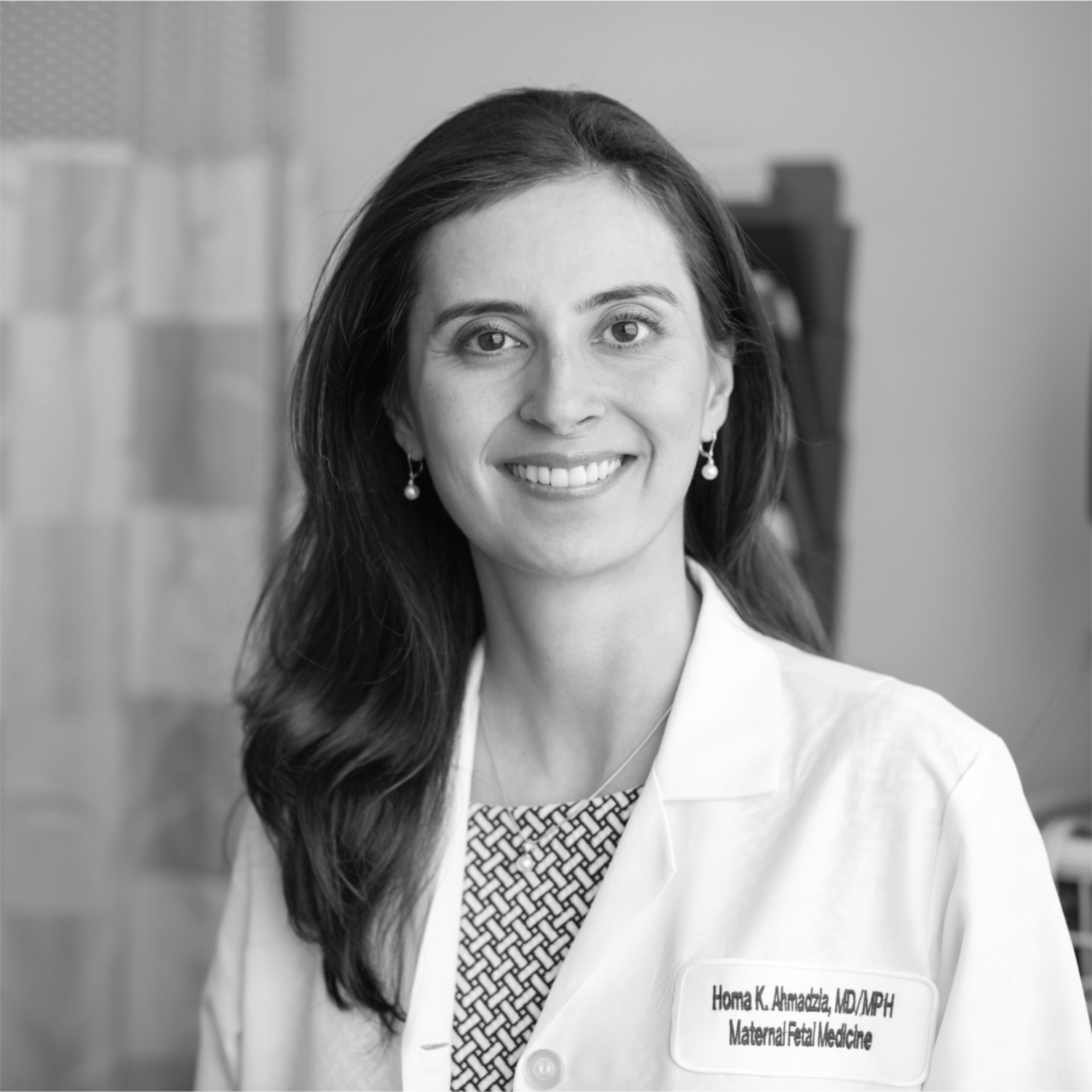


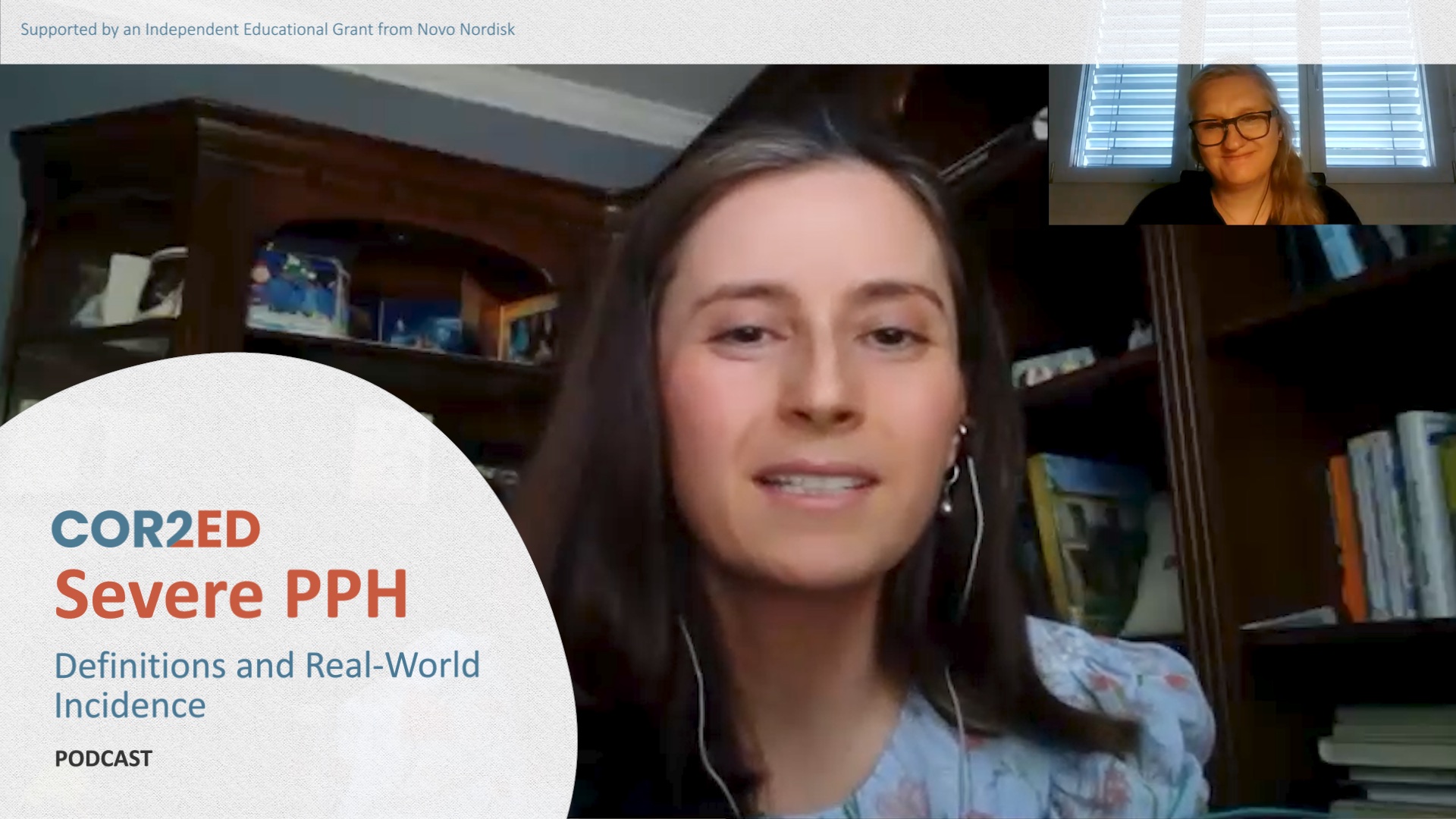





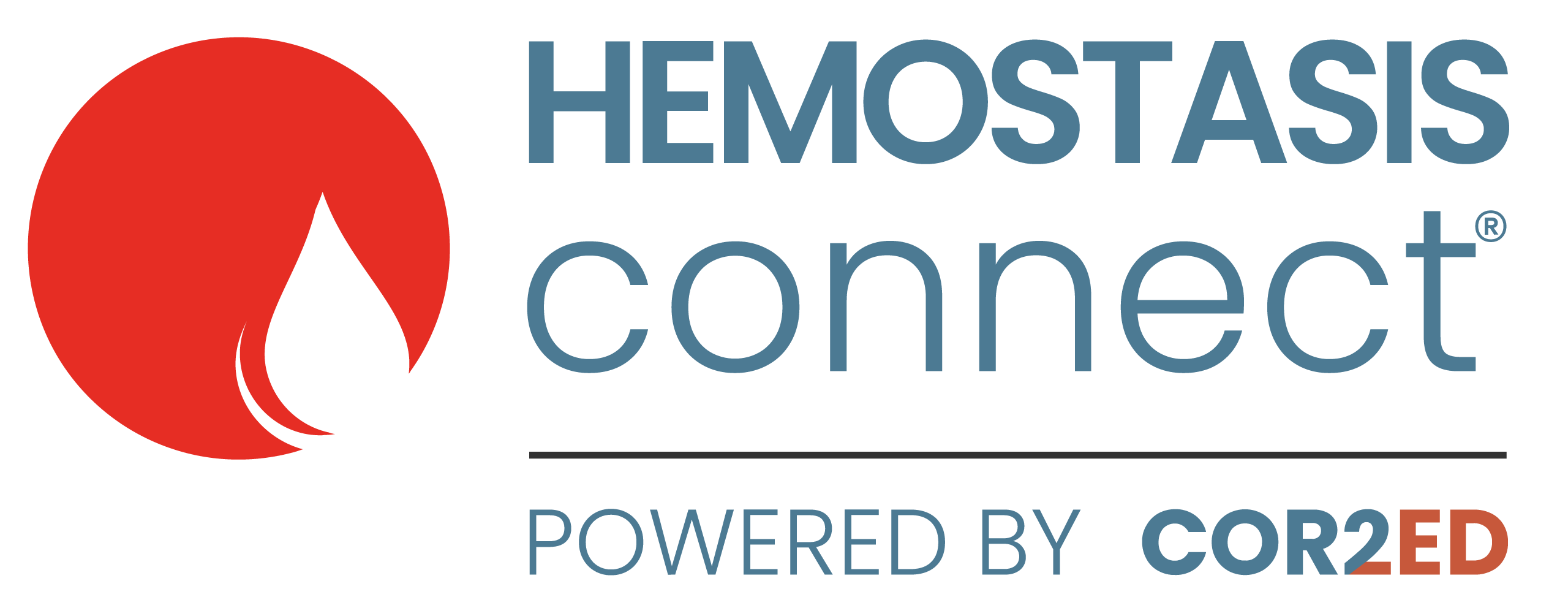

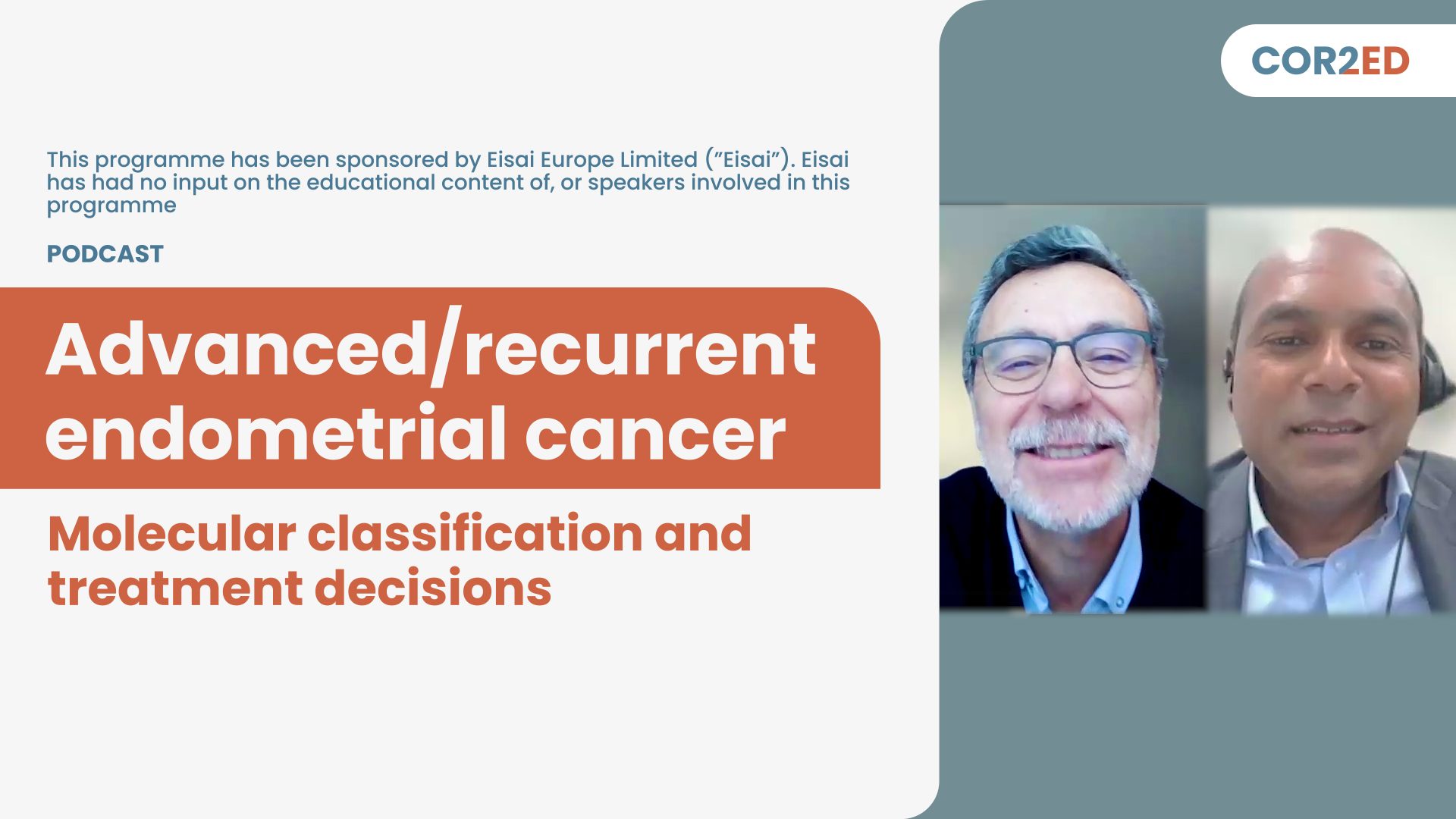
 Downloadable
Downloadable  11 MIN
11 MIN
 Feb 2025
Feb 2025 
